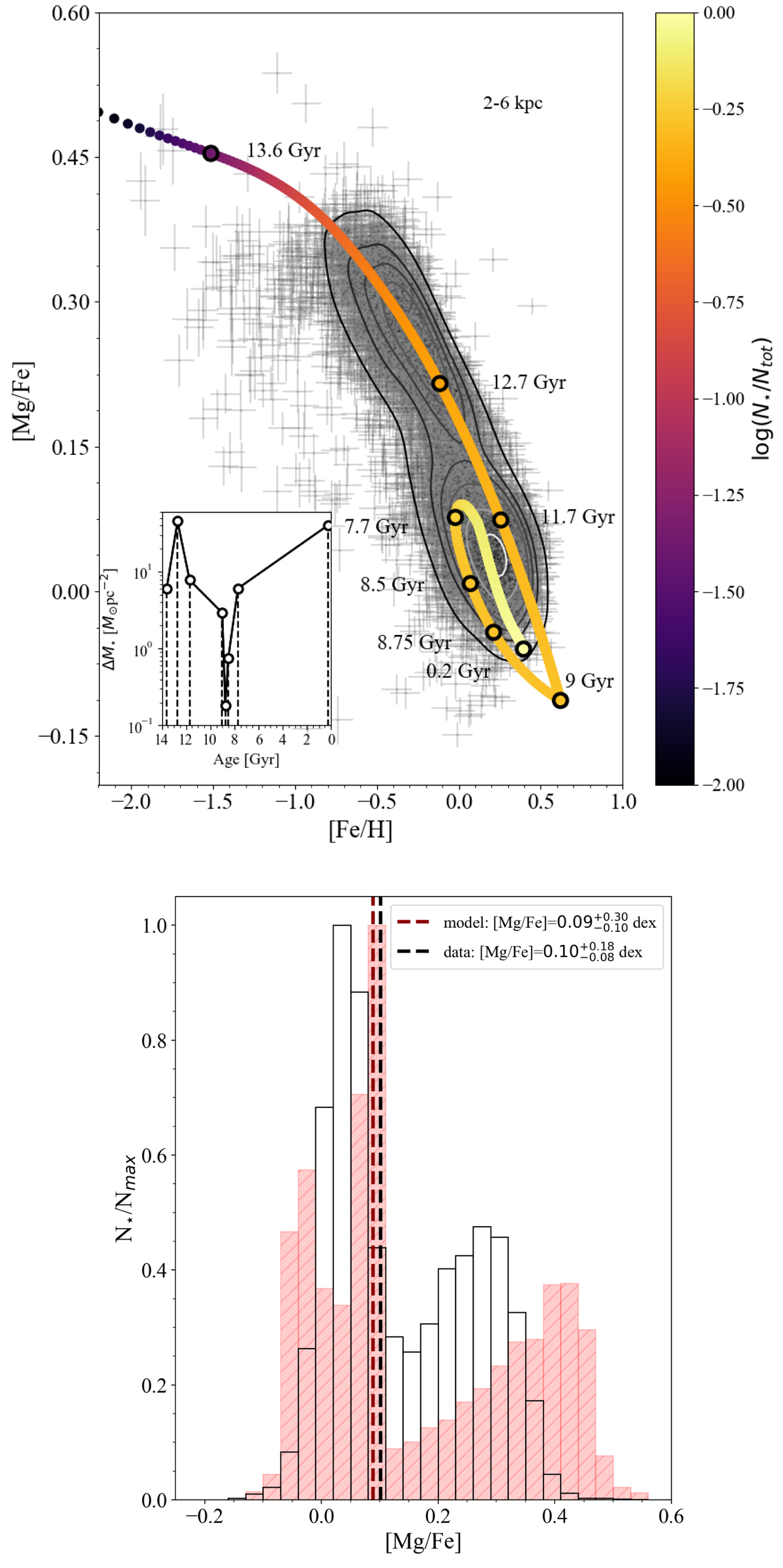Fig. 19.

APOGEE DR16 data in the region 2−6 kpc compared with model predictions computed at 4 kpc with the same best-fit parameters as in the first column of Table 2 but with the surface mass density ratio σ2/σ1 fixed at the value of 1. Upper panel: [Mg/Fe] versus [Fe/H] abundance ratios. As in Fig. 1, the contour lines enclose fractions of 0.90, 0.75, 0.60, 0.45, 0.30, 0.20, 0.05 of the total number of observed stars. The colour coding represents the cumulative number of stars formed during the Galactic evolution normalised to the total number Ntot. The open circles mark the model abundance ratios of stellar populations with different ages. In the inset we show the surface stellar mass density ΔM⋆ formed in different age bins as a function of age, where the bin sizes are delimited by the vertical dashed lines and correspond to the same age values as indicated in the [Mg/Fe] vs [Fe/H] plot. Lower panel: [Mg/Fe] distributions. Black and red vertical lines represent the median values of the data and model, respectively.
Current usage metrics show cumulative count of Article Views (full-text article views including HTML views, PDF and ePub downloads, according to the available data) and Abstracts Views on Vision4Press platform.
Data correspond to usage on the plateform after 2015. The current usage metrics is available 48-96 hours after online publication and is updated daily on week days.
Initial download of the metrics may take a while.


